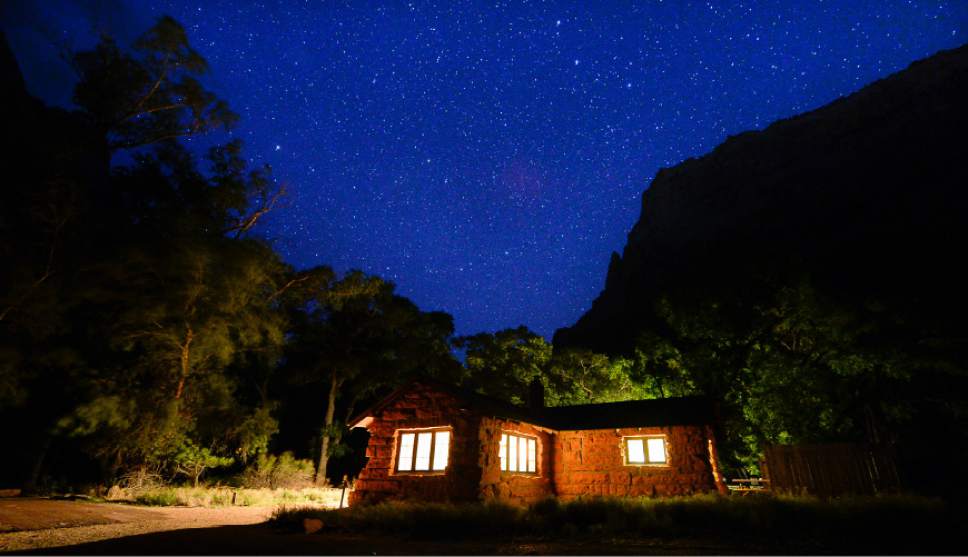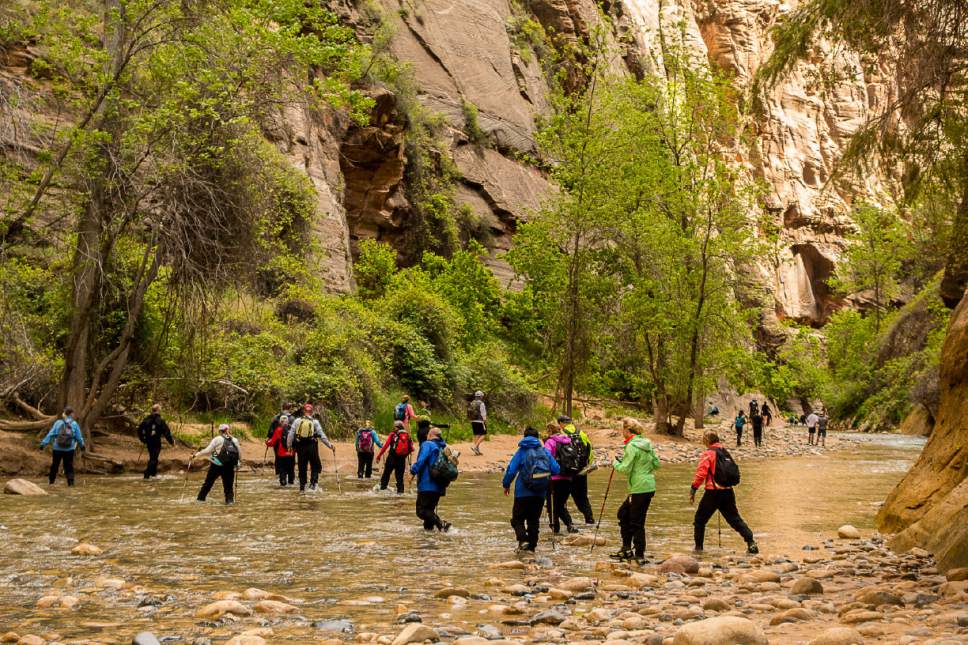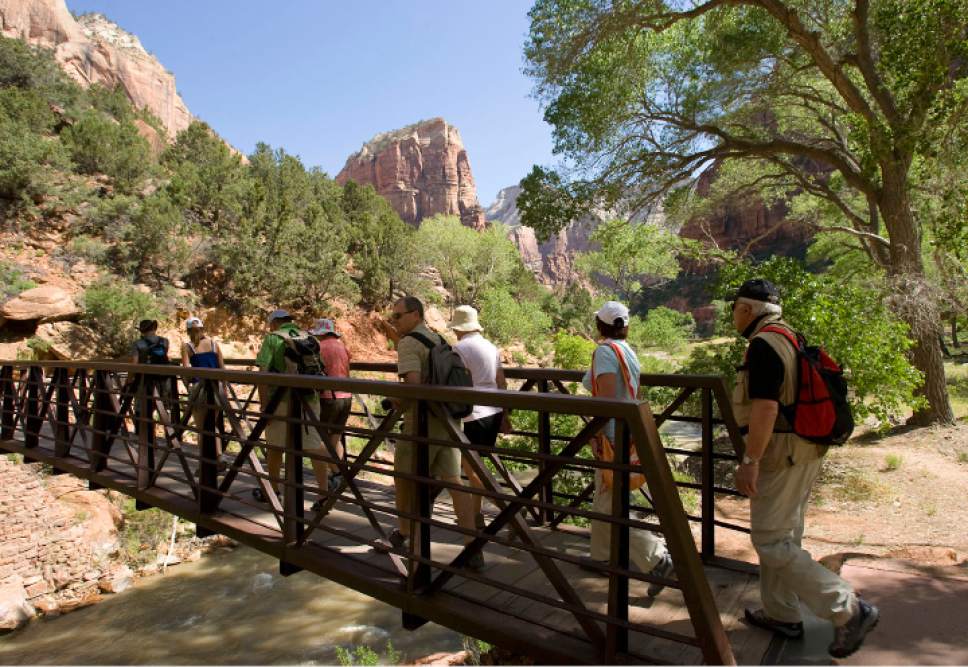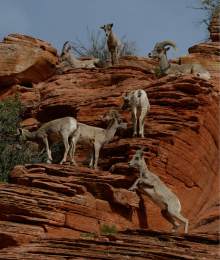This is an archived article that was published on sltrib.com in 2017, and information in the article may be outdated. It is provided only for personal research purposes and may not be reprinted.
Between 200 to 300 natural springs are scattered and hidden around Zion Canyon, sustaining a lush environment and wildlife, including the Zion snail, found nowhere else. Even though millions visit every year, the locations and even the exact number of the springs are unknown.
Taxed to the hilt taking care of roads, bathrooms, shuttles and year after year of record visitation, Zion National Park lacks the budget and personnel to document these springs and myriad other needs park officials would like addressed.
The $19,000 needed to document the springs is one of several funding requests sought this year by the Zion Natural History Association, the park's private nonprofit partner which is announcing a major reorganization Thursday at Salt Lake City's Red Butte Gardens.
The association and its subsidiaries Zion Canyon Field Institute and Zion National Park Foundation are being folded under a single new name, Zion National Park Forever Project. The group has released a 2018 "field guide," outlining $3 million in funding needs it hopes to meet through private fundraising this year.
"We couldn't operate as business as usual. The pressures on the park are too great. Let's fully integrate the resources and programs we have to better serve the park's visitors," said executive director Mark Preiss, who recently moved to Utah from Montana where he helped merge support organizations affiliated with Glacier National Park.
"We are setting the standard here, with the Forever Project, the idea being to re-imagine Utah's pioneer spirit," Preiss said. "Utah takes ownership of challenges. What we do here for Zion will be emulated across the national park system."
The project also provides support for nearby Pipe Spring and Cedar Breaks national monuments.
—
History • In 1909, the canyon was designated Mukuntuweap National Monument by President William Taft using the Antiquities Act, which one prominent Utah politician dubbed "a disease" needing a cure, aka repeal. Congress elevated Zion to park status on Nov. 19, 1919 after the fledgling National Park Service renamed it for the term that Mormon settlers used for the canyon. Kolob, which had also been set aside under the Antiquities Act, was added in 1956. The park is now among the crown jewels of the nation's park system, seeing 4.3 million visitors last year. Nearly 1 million visited Cedar Breaks.
Burgeoning visitation — up 35 percent in three years, without any increase in federal funding — is driving the need to tap private dollars.
"We've had record visitation in eight of the last 11 years. Our data though May show we are up 11 percent over last year," said park Superintendent Jeff Bradybaugh. "When you have that rate of increase that puts stress on everything. Our resources to put toward that have not changed."
That means fewer resources for repairing popular trails, like Emerald Pools and the Grotto, and shoring up historic buildings.
—
The needs • The Forever Project's list of projects to be funded this year address the National Park Service's mission of preserving park resources and providing a great visitor experience. Included on the list are:
• Rehabilitation of the 1928 Pine Creek building, a stone and timber home built to house the superintendent;
• Relocation of some of the park's 500 bighorn sheep outside the park;
• Assessing riparian conditions in Hop Valley;
• Rehabilitating the Grotto Trail along the canyon floor near Zion Lodge;
• Producing a new park film to be screened at the visitor's center; and
• Kwiyumuntsi Paiute Tribal Youth Camp.
The youth camp works with middle-school students from Paiute communities, which have ancestral ties to Zion and surrounding federal lands.
"Education projects are incredibly important for the park and for these young people," Bradybaugh said. "We want to make these opportunities are available for under-served communities. The tribal communities have a direct connection. Many of the place names are derived from Paiute words."
The park's original name Mukuntuweap, in fact, is Paiute for "straight canyon."
Brian Maffly covers public lands for The Salt Lake Tribune. Brian Maffly can be reached at bmaffly@sltrib.com or 801-257-8713.
Twitter: @brianmaffly













